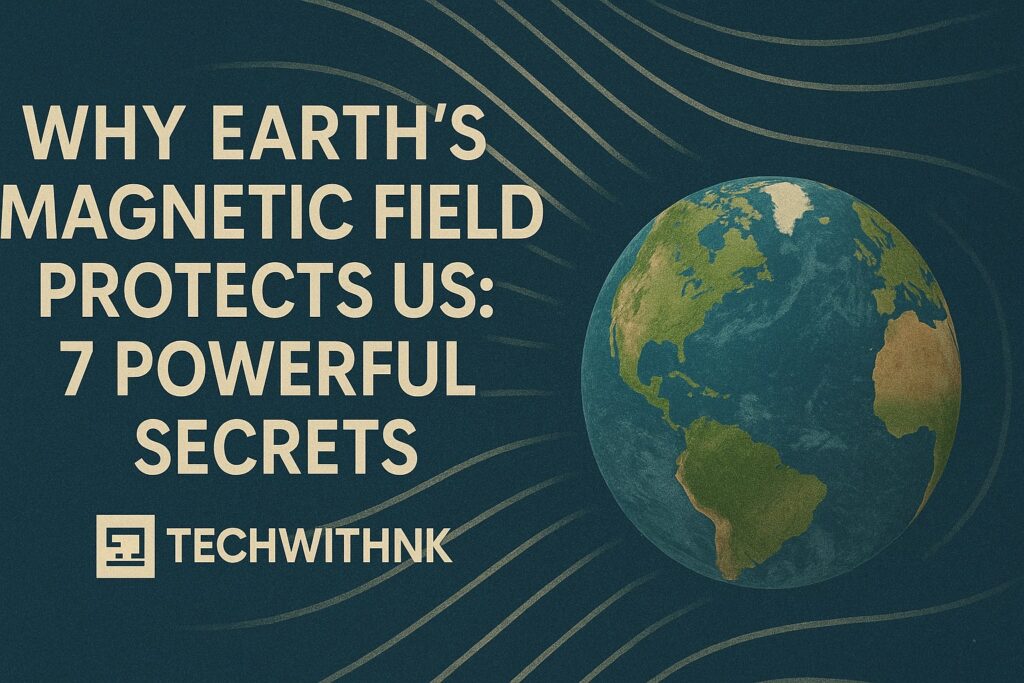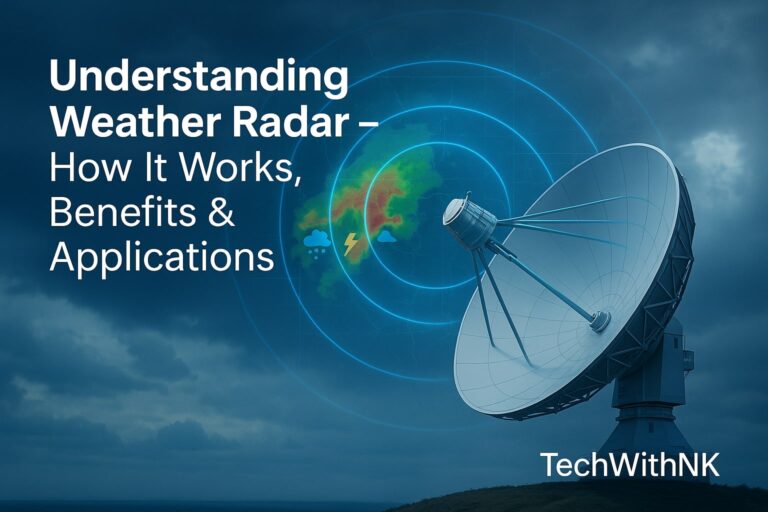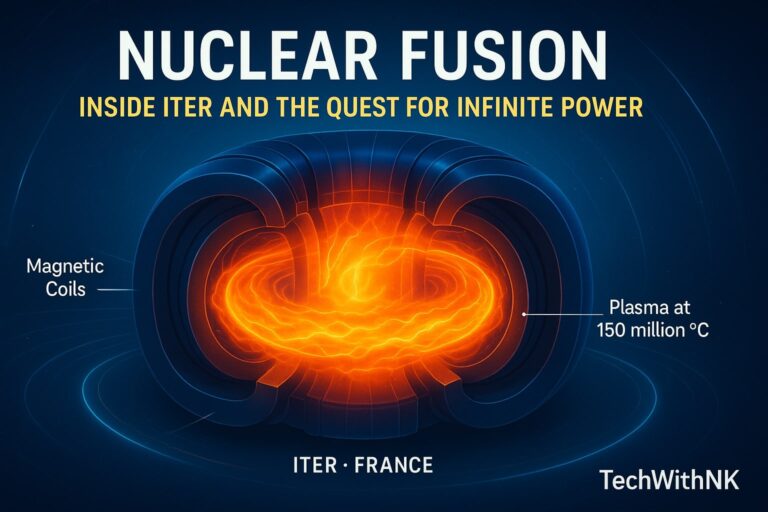Introduction to Earths Magnetic Field
Earths magnetic field is like an invisible superhero suit, shielding every living thing from the dangerous environment of space. It’s produced deep within our planet, by swirling molten iron in the outer core, creating a protective cocoon that keeps harmful particles at bay.
Without it, life as we know it simply couldn’t exist. That’s no exaggeration — Earth’s magnetic field is the reason we have an atmosphere, a stable climate, and even a safe place for technology to operate. So let’s dive in and explore the seven powerful reasons why Earth’s magnetic field protects us and why you should truly care.
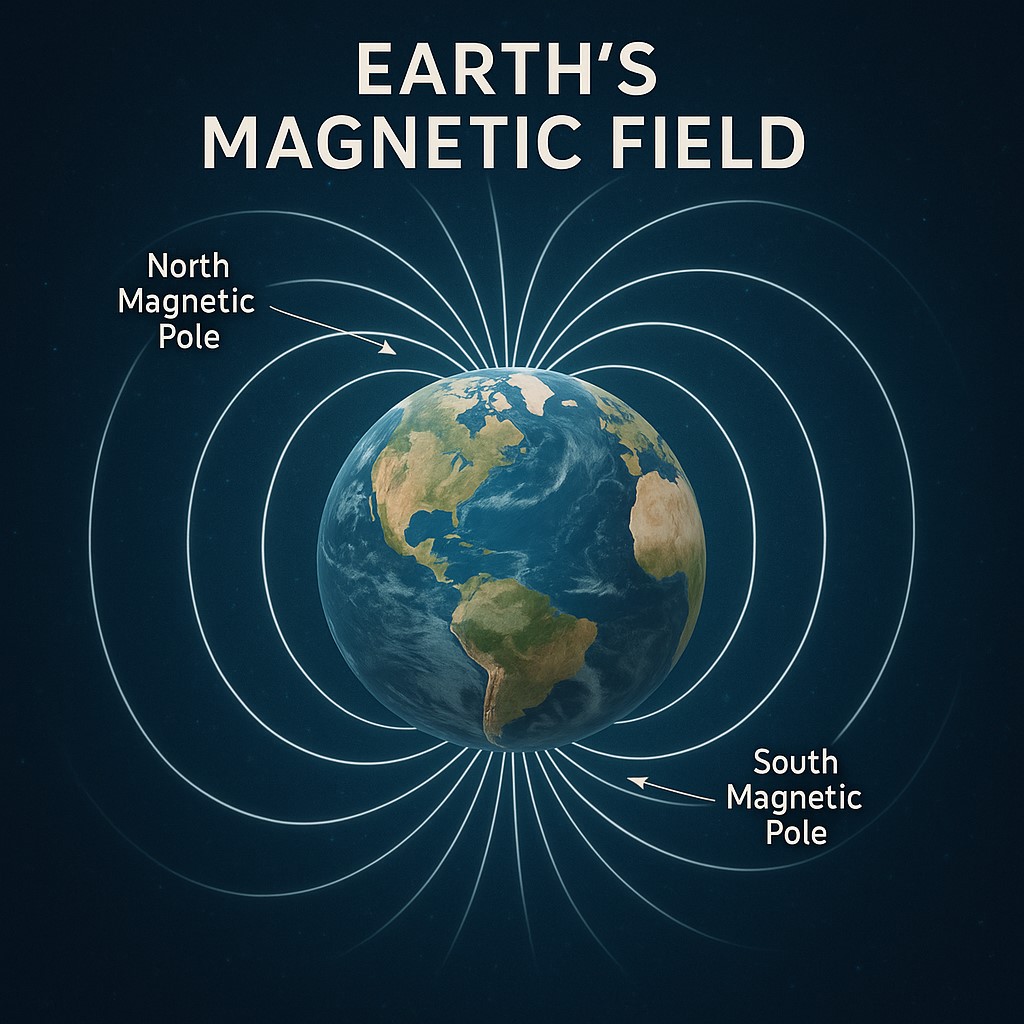
1. Deflecting Solar Wind: Our First Line of Defense
The Sun is a wonderful life-giver, but it also shoots out a deadly stream of charged particles called the solar wind. These particles move at millions of kilometers per hour and would strip away our atmosphere if left unchecked.
Thanks to Earth’s magnetic field, most of these charged particles are deflected harmlessly around the planet, sparing us from certain doom.
How Solar Wind Interacts with earths Magnetic Field
When the solar wind hits the earths magnetic field, it creates a protective bubble known as the magnetosphere. This acts like a cosmic force field, steering solar particles around Earth rather than letting them crash directly into our surface.
Here’s a fun twist: these interactions are responsible for one of nature’s most spectacular shows.
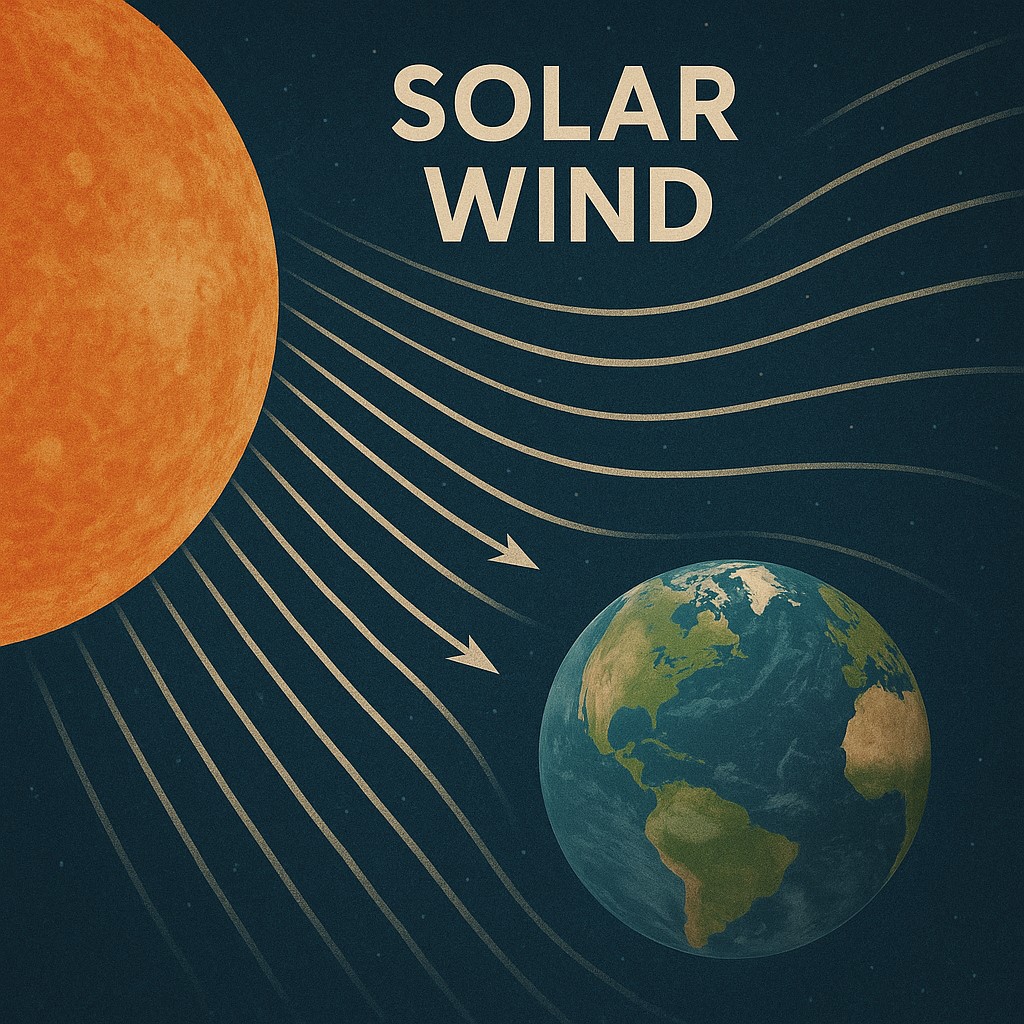
Aurora Borealis: A Beautiful Side Effect
Sometimes, a small portion of solar particles sneak through at the poles, colliding with our atmosphere. This collision creates colorful light displays we call the Northern and Southern Lights, or aurora borealis and aurora australis.
While beautiful, these lights are really a sign of our magnetic shield at work — without it, those same particles would fry the surface instead of putting on a colorful display
2. Radiation Shield: Blocking Harmful Cosmic Rays
Cosmic rays are high-energy particles originating far beyond our solar system, from supernovae and other violent cosmic events. They travel at nearly the speed of light and can damage living tissue and disrupt DNA.
Earth’s magnetic field blocks or redirects many of these rays before they can reach the ground, acting as a protective shield that preserves life.
Cosmic Radiation Explained
Cosmic rays are mostly protons, but they also include heavier atomic nuclei. When they slam into the atmosphere, they produce showers of secondary particles, which can still pose risks to high-altitude pilots and astronauts.
Without the magnetic field, however, these rays would reach the surface far more frequently and in far greater intensity.
Health Impacts Without Magnetic Shielding
If the field were to disappear, higher rates of cancer, genetic mutations, and other serious health impacts would almost certainly follow. It’s thanks to the magnetic field that cosmic rays stay mostly out of our daily lives.
3. Protecting Satellites and Technology
Think about all the satellites in orbit, GPS systems, and your phone’s communications. They all depend on protection from the Sun’s tantrums.
Earths magnetic field helps shield these vital technologies from sudden bursts of charged particles, which can fry electronics and cause massive power grid failures on Earth.
Magnetic Storms and Power Grids
When huge solar storms hit, the magnetic field absorbs much of the impact. But powerful storms can still squeeze through and damage power grids — something utility companies plan for today.
Impact on GPS and Communication Systems
Solar storms can disrupt GPS signals, radio communication, and even cause satellites to go offline. Without the earths magnetic fields buffering effect, these disruptions would be constant and far more severe.
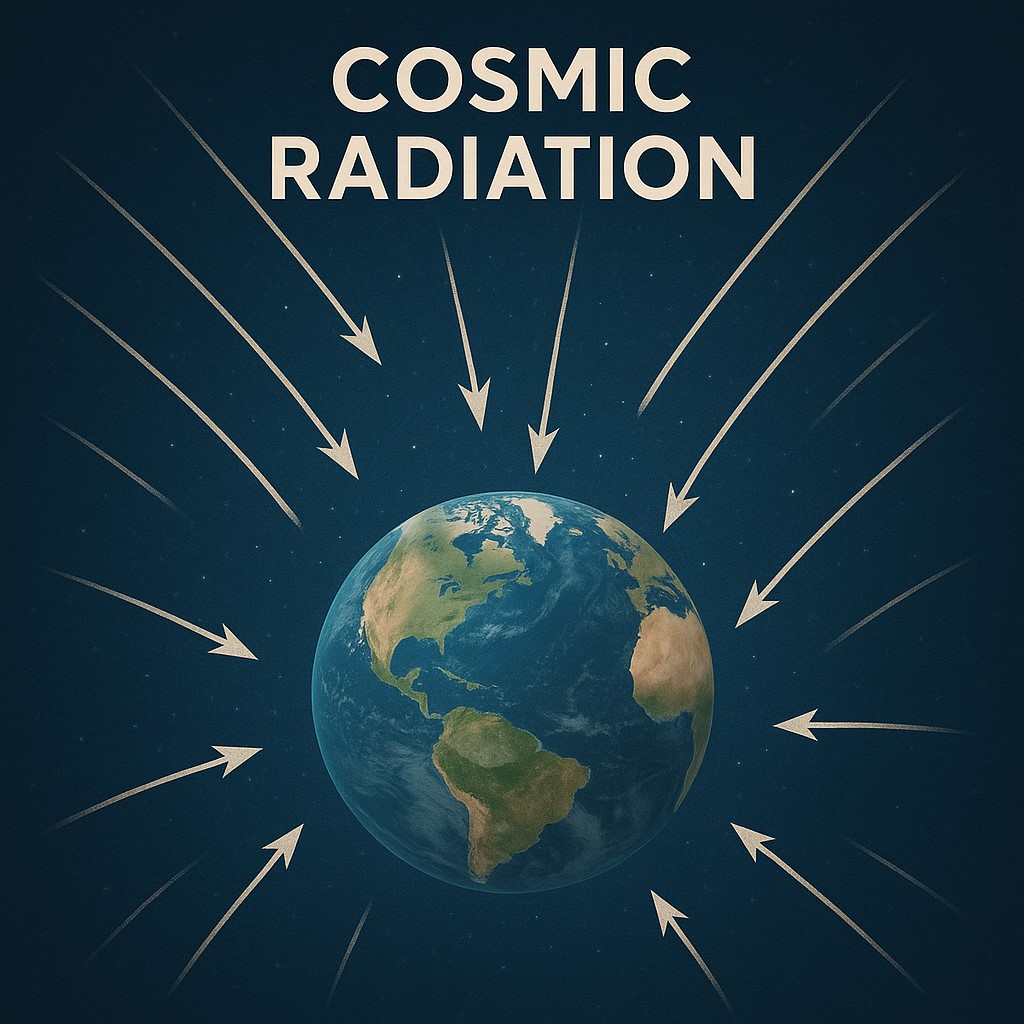
4. Preserving Earth’s Atmosphere
Over billions of years, Earths magnetic field has helped preserve our atmosphere by deflecting the solar wind. Mars is a tragic example of what happens when a planet loses its magnetic field — its atmosphere was stripped away by the Sun, leaving a cold, dry wasteland.
The Role of Magnetic Fields in Atmospheric Retention
Earth’s magnetosphere prevents the solar wind from directly interacting with the upper atmosphere, slowing down the rate of atmospheric loss.
Lessons from Mars’ Lost Magnetic Field
Mars once had liquid water, but its weaker magnetic field collapsed billions of years ago. The solar wind then swept its air away, transforming it into the red desert we see today.
Earth has survived thanks to its magnetic protection, maintaining an atmosphere that supports oceans, weather, and life.
5. Supporting Navigation and Animal Migration
For centuries, humans have relied on magnetic compasses to find their way. But we’re not the only ones who do.
Many animals — from sea turtles to birds — navigate using the magnetic field. They sense its direction to travel thousands of kilometers on migration journeys.
Animal Magnetoreception
Scientists think animals have specialized cells with tiny magnetic crystals, allowing them to “feel” the magnetic field and orient themselves.
Human Navigation and Magnetic Compasses
Without the earths magnetic field, compasses would be useless, and animal migration patterns could collapse, harming entire ecosystems. That alone is a huge reason to protect and study Earth’s magnetic environment.
6. Stabilizing Climate and Weather Patterns
You might not think of weather when you think of a magnetic field, but space weather — driven by the Sun — can affect climate stability.
A strong magnetic field prevents too much solar energy from disrupting atmospheric circulation, helping keep weather systems consistent.
Space Weather’s Effect on Climate
Massive solar storms can temporarily change upper atmospheric temperatures and even impact jet streams.
Predicting Long-Term Climate Trends
Understanding magnetic cycles helps scientists predict long-term climate changes, giving humanity more time to adapt.
7. Fostering Evolution and Biodiversity
Earth’s magnetic field may have played a huge role in the evolution of life. By shielding early organisms from intense radiation, it gave them a safer environment to evolve.
Early Life and Radiation Protection
Billions of years ago, simpler life forms were shielded from cosmic rays and solar storms, allowing them to thrive.
Evolutionary Adaptations Tied to the Magnetic Field
Some scientists even believe magnetic field reversals influenced evolution by creating periods of increased mutation rates, spurring biological innovation
How Scientists Study Earths Magnetic Field
Geomagnetic Surveys
Modern satellites map changes in the magnetic field continuously, helping researchers monitor its health.
Paleomagnetism and Magnetic Reversals
By studying magnetic signatures in ancient rocks, scientists track how the field has flipped polarity dozens of times over millions of years.
This work is vital to prepare for future magnetic changes.
Potential Threats to Our Magnetic Shield
Pole Reversals Explained
Every few hundred thousand years, the magnetic poles swap places. During these reversals, the field weakens, leaving Earth partially exposed.
Core Cooling and Field Weakening
If Earth’s core ever cools too much, the field could shut down permanently. That would be catastrophic for life and technology alike.
Conclusion: The Magnetic Field’s Legacy
Earths magnetic field is truly one of the planet’s unsung heroes. From shielding life to supporting climate, technology, and even evolution, it’s a cosmic guardian worth celebrating and protecting.
Next time you see the Northern Lights or use your GPS, thank the magnetic field. It might be invisible, but its importance couldn’t be clearer.
What causes Earths magnetic field?
Earths magnetic field is generated by the movement of molten iron and nickel in its outer core, acting like a planetary dynamo.
Could the magnetic field disappear?
Not permanently anytime soon, but it does weaken during pole reversals, which happen naturally over geologic time.
3. What would happen if Earth lost its magnetic field?
We’d face intense radiation, atmospheric loss, climate changes, and technology failures.
